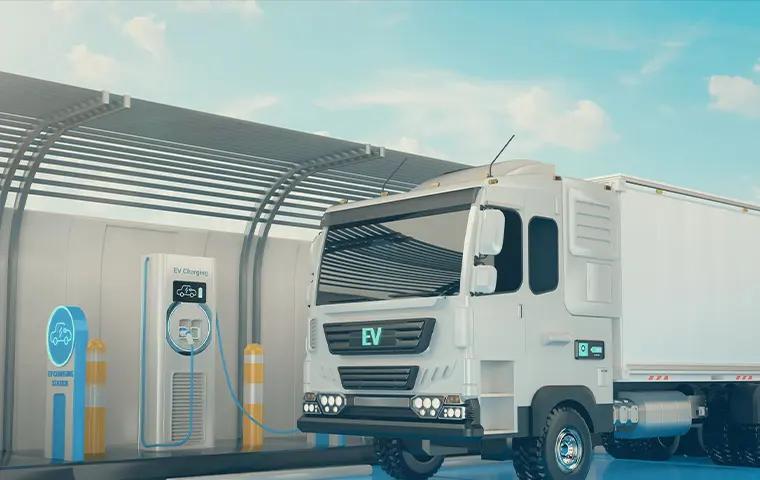Commercial fleets are on the lookout for ways to reduce their carbon footprint. They also want to curb fuel and maintenance costs. Electric vehicles check all these boxes, so it’s no surprise their use is growing.
By 2030, experts estimate that the electric commercial vehicle market will reach $848.94 billion. Growth contributors include fuel price hikes and the increased availability of electric vehicles.
As electric vehicle use grows, there has to be more conversation around EV fleet management. Let’s dive into some specific needs of EV vehicles and solutions to support them.
Understanding the Specific Needs of EV Fleets
While EV fleets come with unique benefits, they also have unique needs.
On the one hand, EV fleets require a unique infrastructure. Vehicles must have access to charging stations to maintain fleet availability and operations.
There’s also the impact operations have on the performance of EV batteries. Fleets must regularly monitor batteries to maximize range and sustainability.
With the move to EV fleets, fleet managers must also stay current on EV-related regulations. They may also need to train fleet drivers to educate them on EV procedures.
Charging Infrastructure for EV Fleets
When traditional vehicles need to refuel, they can tap into a well-established network of gas stations. With EV fleets, plans have to become more strategic.
One study shows that the U.S. averages around 104 gas pumps per 1,000 road miles. Within that same distance are an estimated 22 EV charging ports.
Even though the availability of EV chargers has increased in recent years, there is still a considerable gap. From an EV fleet management perspective, dispatch must plan driver routes with these gaps in mind. Managers need to ensure drivers have access to charging points on routes. That way, they can minimize downtime and maintain their fleet’s efficiency.
While considering charging station availability, managers must also consider the various charging speeds at different stations. Slower charging speeds mean electric vehicles will be idle for extended periods. Faster charging speeds can be more expensive.
Monitoring and Maintaining Battery Health
An EV’s battery pack is one of its most critical components. The battery stores the energy that powers the vehicle, affecting its range and performance.
Research shows that EV batteries can lose 5-10% of their capacity within the first five years. Due in part to age, this degradation can also be a matter of exposure to extreme temperatures and fast charging.
Repairing or replacing an EV battery in a fleet vehicle can be costly. Costs aside, repair or replacement also means the vehicle is unavailable for a time.
It’s also essential to consider how battery degradation affects a vehicle’s performance until that point. When a battery is in a poor state of health, it has a harder time holding on to its charge. This degradation makes the driving experience more unpredictable.
All these variables make EV fleet management software a worthwhile investment. Real-time monitoring enables fleet managers to keep battery health at its best.
Optimize EV Usage for Energy Efficiency
One of the big reasons fleets invest in EVs is to maximize energy savings. Below are some strategies that fleet managers can use to achieve this goal:
- Charge during off-peak hours. You’ll be able to take advantage of lower electricity rates and save costs. You’ll also reduce strain on the electrical grid.
- Embrace vehicle-to-grid (V2G) technology. Draw power from the grid while discharging excess back into it. You’ll optimize energy usage and can even generate revenue.
- Train and educate drivers. Instill energy-efficient techniques in drivers. Encourage smooth acceleration/braking and reduce excessive idling.
- Leverage EV fleet management software. Use technology to monitor driver behavior, optimize routes, and keep vehicles well-maintained.
The Role of EV Fleet Management Software
With EV fleet management software, operators can access real-time data about their vehicle’s performance and battery health. You can also oversee driver behaviors that either support or hurt energy savings. From these insights, you can identify areas for improvement and avoid costly issues.
Alongside telematics, fleet management software also features route optimization tools. You can map out driver routes based on numerous factors, from traffic conditions to charging station availability. You’ll curb energy use and ensure vehicles have the optimal battery levels to reach their destination.
The Future of EV Fleet Management
EV fleet management invites new dynamics, from charging infrastructures to monitoring and maintaining battery health. With fleet management software, operators can prepare for these dynamics. You’ll streamline operations, improve efficiency, and drive successful EV initiatives.
Need help managing your EV fleets? Request a demo to see how Azuga can help.








